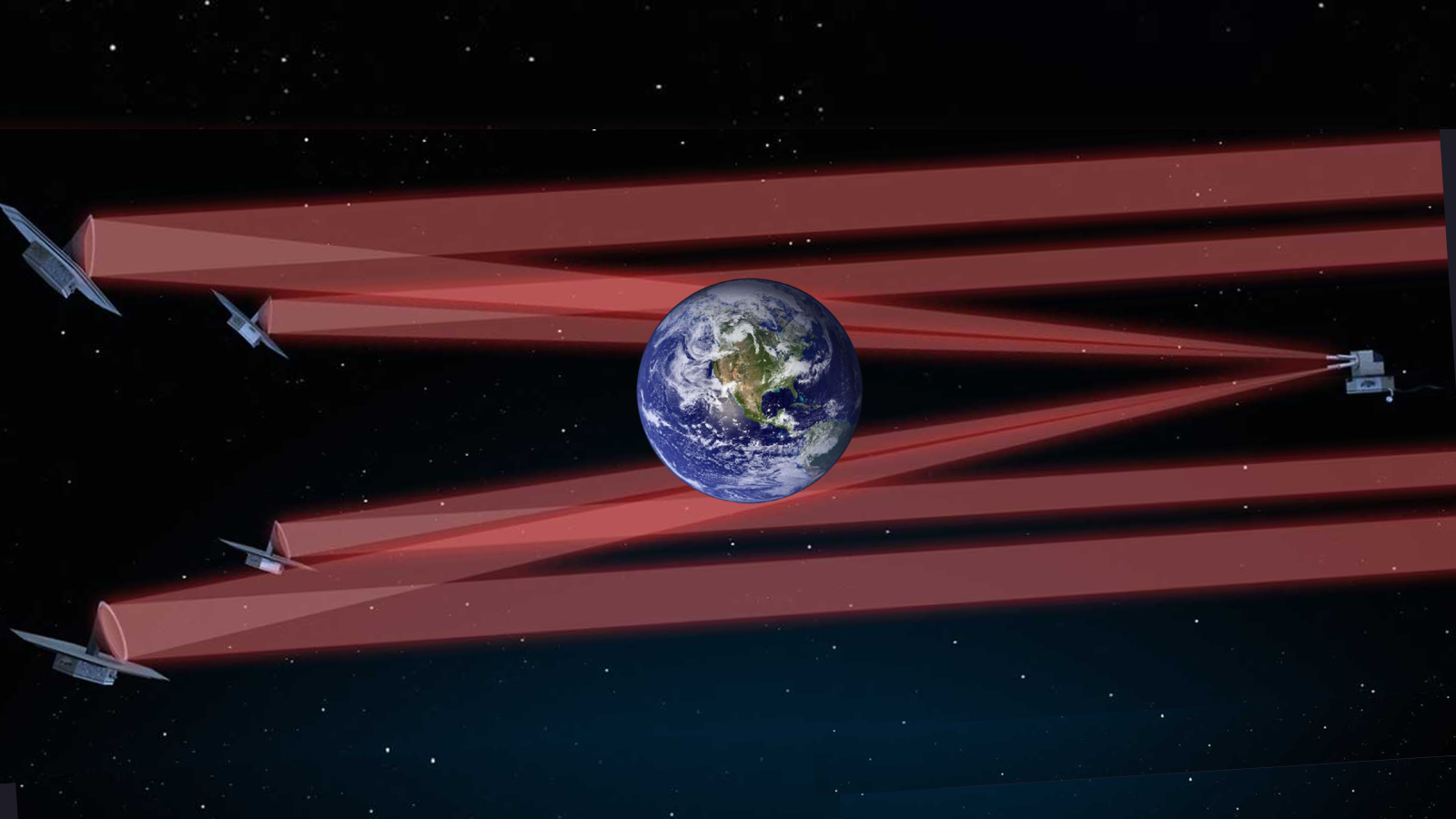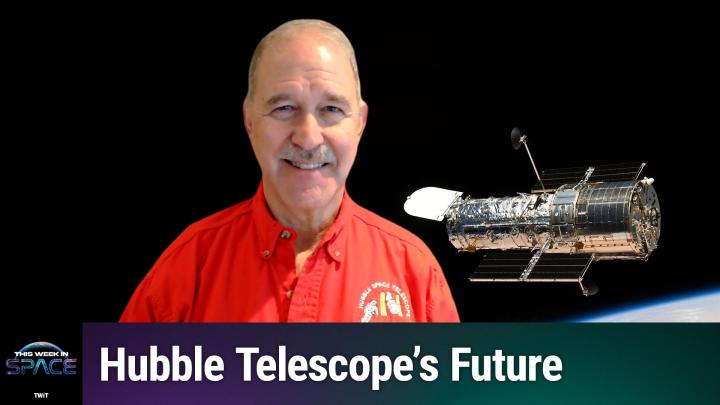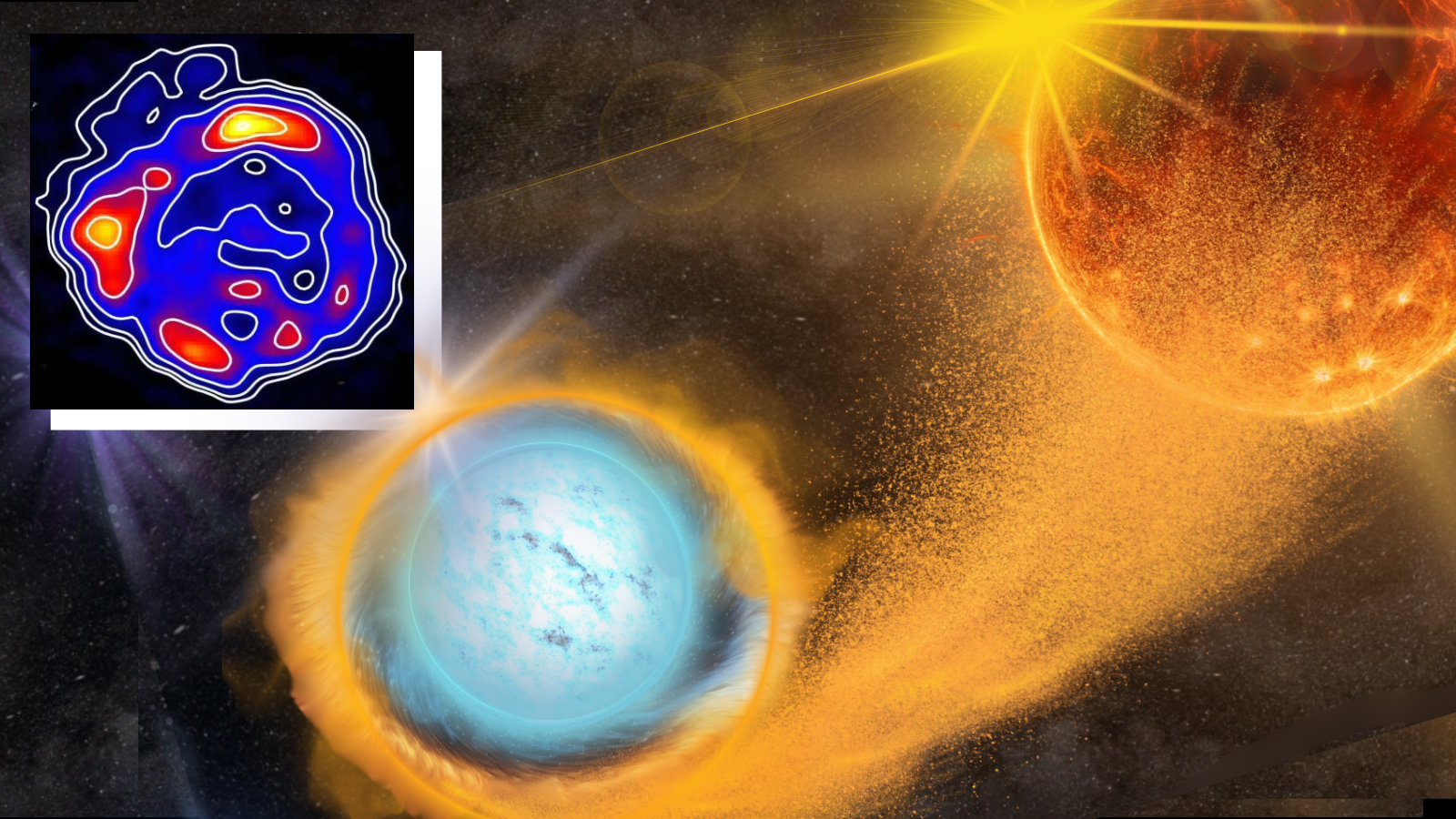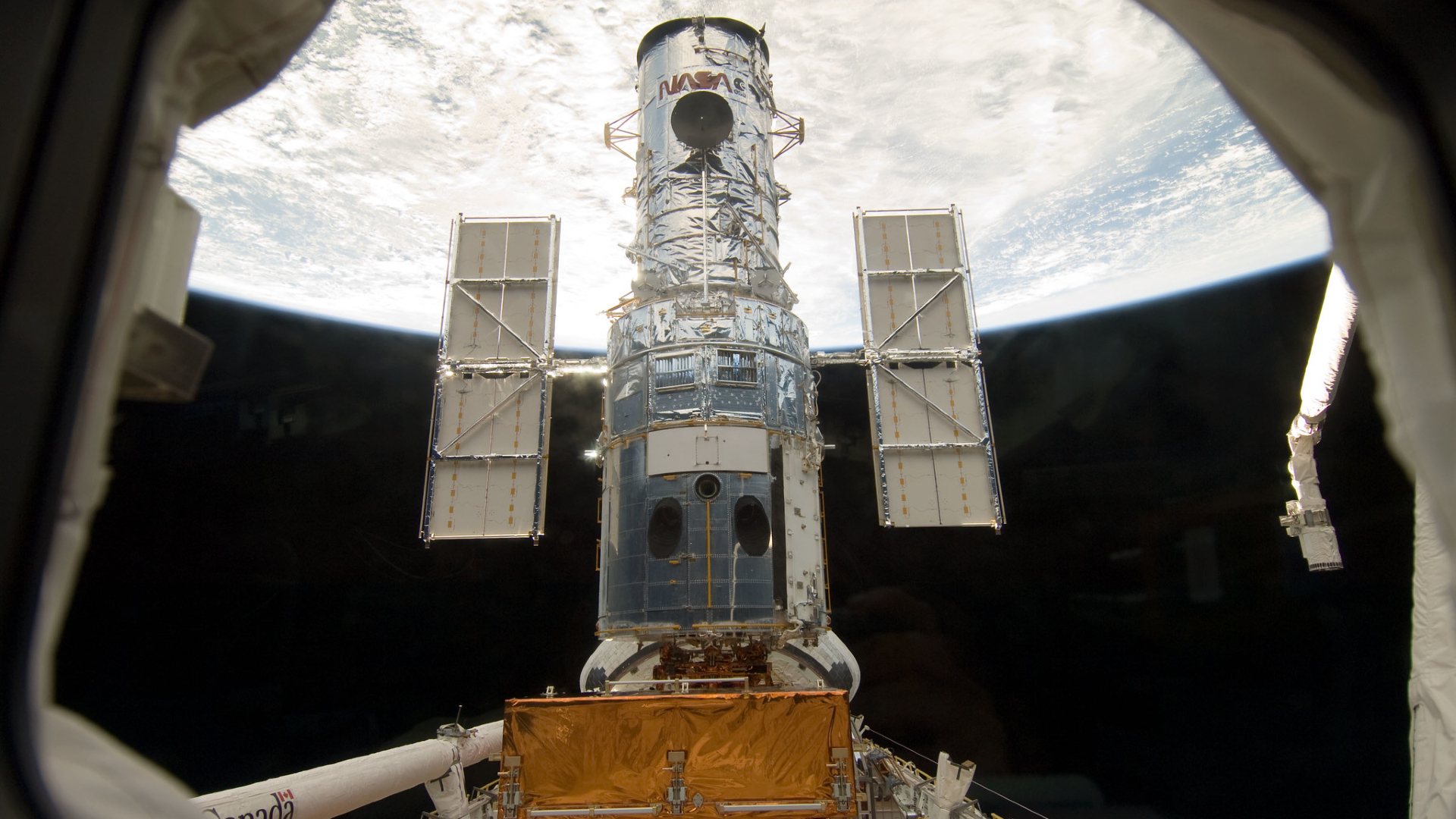How rare are inhabited worlds in the universe? The 'LIFE' space telescope fleet could find out
Could life be everywhere — or are we rare?

A new mission concept that would see a fleet of telescopes probing rocky planets in their stars' habitable zones should be able to tell us how common life is in the universe — even if the mission doesn't find any life at all.
"A simple positive detection would change everything," said astronomer Daniel Angerhausen of ETH Zurich in Switzerland in a statement. "But even if we don't detect life, we'll quantify how rare – or common – planets with detectable biosignatures really might be."
LIFE, the Large Interferometer For Exoplanets, is a proposal for an ambitious new mission designed to reveal how many Earth-like planets out there are inhabited by some form of life. Here's the plan.
Led by ETH Zurich astronomers, the mission concept proposes for four space telescopes to fly in formation around a central "combiner" spacecraft. The idea is that the four space telescopes would fly tens to hundreds of meters apart and collectively act as an interferometer, meaning they'd combine their light detections by feeding signals to the central combiner spacecraft. Furthermore, to block out the glare of a star so that LIFE could detect orbiting exoplanets, the telescopes will employ a technique known as "nulling interferometry," whereby the light of the star is combined "out of phase." This would allow what's known as "destructive interference" to cancel out that light, leaving behind just the light given off by orbiting planets.
LIFE won't be able to directly image exoplanets, but by observing in the mid-infrared it will be able to spectroscopically measure their light and reveal which molecules are present in their atmospheres (if they have one).
LIFE will target dozens of Earth-size planets in the habitable zone of their stars, in the hopes of finding biosignatures, which are atmospheric gases produced, or kept in balance, by life. The likes of oxygen and water vapor are the most obvious of such biosignatures, but others include ozone, methane, nitrous oxide, dimethyl sulphide and phosphine, to name a few.
Currently, however, LIFE is just a concept. It has not yet been adopted by a space agency.
Get the Space.com Newsletter
Breaking space news, the latest updates on rocket launches, skywatching events and more!
Still, Angerhausen and colleagues at ETH Zurich wanted to find out how much LIFE could tell us, even if it failed to find biosignatures. What would a negative or null result imply about the frequency of inhabited planets in the galaxy? For this, they turned to statistics.
So before we go any further, we also need to delve into the world of statistics to understand their conclusions.
The team employed a Bayesian statistical model to find the smallest number of exoplanets LIFE would need to observe to yield a firm answer as to how common inhabited worlds are. Bayesian statistics has to do with finding the probability of an outcome based on other probabilities that we already know (these are described as "priors"). Bayesian statistics describes the level of confidence or belief we have that an event will occur based on what we know about a certain situation.
For a mundane example, suppose you hear a loud bang. Was it thunder? Maybe a firework? Bayesian statistics allows you to deduce the answer based on the probabilities of the priors, such as knowing whether fireworks are usually set off around certain times of the year (like New Year's Eve, the fourth July in the United States and Bonfire Night in the U.K.) or if the weather has been forecast to be stormy. Based on these priors, Bayesian statistics allows you to quantify your belief as to whether it was thunder or a firework.
In contrast to Bayesian statistics, an alternative way of looking at probabilities is "frequentist statistics." As the name implies, this describes the probability of an outcome based on the frequency of that event occurring after many trials.
Unlike Bayesian statistics, frequentist statistics does not concern itself with priors. When tossing a coin, frequentist statistics doesn't worry about whether the previous four tosses have all landed on heads. Assuming an unbiased coin, the chances of it landing on heads or tails is always 50%, and over a high enough number of trials this 50% probability would appear readily apparent in the data.
So, back to the question: how many planets could LIFE observe and not find any biosignatures before astronomers can start drawing conclusions regarding the prevalence of life in the galaxy? Through the use of Bayesian statistics, Angerhausen's team found that between just 40 and 80 exoplanets would need to be observed with no detectable biosignatures to conclude with confidence that fewer than 10 to 20% of similar planets in the universe has life. Surveying this many exoplanets is well within LIFE's planned abilities.

If LIFE detects no biosignatures on its sample of planets, it cannot conclude that there is no life anywhere, but it can place a maximum limit on how many planets in the galaxy do have life. And, as the sample size increases, if there continues to be no detection, then that maximum number would decrease further. In other words, LIFE could tell us whether inhabited planets are rare or not.
There will be uncertainties, however. Perhaps a biosignature will be missed — after all, some of these gases are not easy to detect. Or perhaps some planets will be mistakenly included in the sample of potentially habitable planets when, in fact, they do not fit the requirements to be considered potentially habitable in the first place. Again, this could occur because observations are difficult.
"It's not just about how many planets we observe, it's about asking the right questions and how confident we can be in seeing or not seeing what we’re searching for," said Angerhausen. "If we're not careful and are overconfident in our abilities to identify life, even a large survey could lead to misleading results."
To test their conclusion, Angerhausen and colleagues also applied frequentist statistics to the problem. They found the results to be similar.
"Slight variations in a survey's scientific goals may require different statistical methods to provide a reliable and precise answer," said Emily Garvin, a Ph.D. student at ETH Zurich. "We wanted to show how distinct approaches provide a complementary understanding of the same dataset, and in this way present a roadmap for adopting different frameworks."
With luck, if the LIFE mission or something similar ever goes ahead, it will find a planet, or planets, with life of some variety. But even if it doesn't, the results could still be profound and take us one giant leap closer to understanding our place in the universe.
The study was published on April 7 in The Astronomical Journal.
Join our Space Forums to keep talking space on the latest missions, night sky and more! And if you have a news tip, correction or comment, let us know at: community@space.com.

Keith Cooper is a freelance science journalist and editor in the United Kingdom, and has a degree in physics and astrophysics from the University of Manchester. He's the author of "The Contact Paradox: Challenging Our Assumptions in the Search for Extraterrestrial Intelligence" (Bloomsbury Sigma, 2020) and has written articles on astronomy, space, physics and astrobiology for a multitude of magazines and websites.
You must confirm your public display name before commenting
Please logout and then login again, you will then be prompted to enter your display name.









